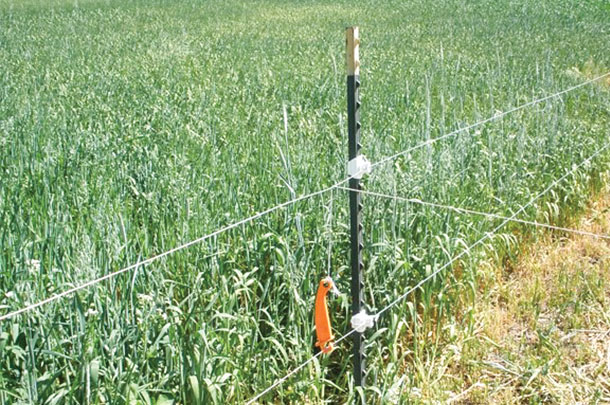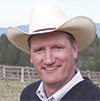In addition to improving soil health, cover crops are providing an excellent forage source for cattle producers.
Cover crop grazing is a concept that is not new. Decades ago, before the use of commercial fertilizer, farmers planted various crops to improve soil health and fertility. In many cases, these crops were grazed by livestock to utilize the forage and cycle nutrients back into the soil.
With the adoption of modern fertility programs, the use of cover crops or green manure crops was reduced. Today we are seeing a resurgence of this practice.
Successfully incorporating cover crops into a rotation and grazing the forage is dependent on many variables. Location, climate, soils and rainfall will dictate seeding dates, species seeded and when the forage can be grazed. Some regions can seed in early fall with winter and early spring grazing, while other areas seed in the spring with summer and fall grazing.
No matter where you are located, it appears that cover crops can provide a source of high-quality forage for cattle.
Know your plant dates
In the dryland region of north-central Idaho and eastern Washington, the use of cover crops is starting to be adopted by area farmers. Cover crops are being planted to improve soil health and provide forage for livestock, primarily cattle. This region enjoys spring rains that produce abundant pasture and range grass during the months of April through July. Starting in mid-July, the rains stop and so does the growth of grass.
Cover crops are providing much-needed high-quality forage for cattle during late summer and fall for cattle producers.
Farmers and ranchers considering planting and grazing cover crops need to evaluate several management practices in order to be successful. The first consideration is the planting date and what mix of species will be planted. This will vary depending on where the operation is located across the country.
In the dryland areas of the Pacific Northwest, demonstration research conducted by the University of Idaho Extension has shown that the ideal time to seed cover crops for summer and fall grazing is the first week of May. The species mix to plant again will vary.
There are several different crops that can be planted: legumes, cereals, cool-season species, warm-season species and other species such as forage radish and forage turnips. Consult with your local university extension educator and the Natural Resources Conservation Service (NRCS) for information on what species will grow and work well in your area of the country.
Know your seed mixes
In north-central Idaho, the University of Idaho Extension and the NRCS recommend a mix for growers that includes these six species: spring forage oats, spring triticale or spring forage barley, forage radish, forage turnips, spring canola and spring peas. This mix has worked very well for producers.
It is a mix that grows well in the area, provides nutrients for both soil and cattle and produces adequate forage. In fact, some producers have had production of over 3 tons of forage dry matter per acre with this mix.
In addition, forage tests, taken at turnout time in several locations, have shown the feed to contain crude protein levels that ranged from 16 to 19 percent and total digestible nutrients (TDN) levels that ranged from 56.9 to 58.5 percent.
This feed meets the nutrient requirements for nursing calves, gestating cows and yearlings. Some producers in this region fall calve, and this level of nutrition is great for cows in the third trimester of pregnancy.
Know your grazing plan
Grazing management is important for success when grazing cover crops. The grazing system a producer uses will be based on location and layout of the field, fencing, access to water and labor availability. Other goals also need to be considered, including how much of the forage will be harvested and how much is left as ground cover.
It is recommended to “take half, leave half.” This will provide forage for the cattle and leave residue to improve soil health.
Rotational grazing using small paddocks is the recommended grazing system. Two research groups both recommended dividing a field into small paddocks and grazing the paddocks with high-stocking density for a short duration provides increased utilization, improves forage and soil health and is advantageous for cattle performance.

With high-quality electric fencing available, it is easy to use a one-strand electric fence as a cross fence for making the paddocks and a two-strand electric fence as the border fence if a permanent border fence is not available. Paddock size will be determined by the size of the field, the number of cattle being grazed and how often a producer wants to move cattle.
This is a big decision, because the more often cattle are moved, the more labor is required. When designing a grazing system using paddocks, it is important to consider where the water source will be and how cattle can access water.
Producers also need to consider how quickly the forage will be grazed. In the dryland regions, forage growth comes on rapidly and when the dry season begins, the forage will stop growing and begin to dry down. When this happens, forage quality will decline.
If a producer will not be able to graze the forage prior to drydown, swathing the forage into windrows and windrow grazing is a good alternative. This preserves forage quality while still allowing cattle to graze.
 Another consideration is swathing the forage, letting it dry and baling the cover crop for use in the winter as a feed source or for bale grazing.
Another consideration is swathing the forage, letting it dry and baling the cover crop for use in the winter as a feed source or for bale grazing.
Know your cattle performance
Cattle performance is a question that most cattle producers have in regards to grazing cover crops. Researchers predicted that yearling cattle grazing cover crops in Nebraska should gain 2.2 to 2.7 pounds per day. In 2015, a north-central Idaho producer grazed 75 head of spayed yearling heifers for 65 days on a cover crop field.
The heifers gained 1.75 pounds per day. This was in a very dry year with limited rainfall. Cover crops appear to provide the quality and quantity of forage to allow cattle to perform well.
In summary, the use of cover crops as a rotation crop is becoming more common and, in turn, is providing cattle producers with a source of high-quality feed. Successfully planting and grazing cover crops depends on:
- Determining if cover crops are a viable rotation crop option
- Identifying the species that will grow and thrive where you are located and the ideal time to seed the crop
- Determining the best time of year to graze cover crops in your area
- Developing a grazing system that will work for you
- Providing the labor needed to meet your grazing goals
In addition, producers should follow guidelines on fertilization and management to avoid health-related problems such as nitrate poisoning. There are professionals available to help design a program to ensure your success with cover crops. Contact your local university extension educator and the NRCS for assistance. ![]()
References omitted but are available upon request. Click here to email an editor.
PHOTO 1: Cow-calf pairs grazing cover crops.
PHOTO 2: Example of a single-strand, electric cross fence.
PHOTO 3: Windrowing cover crop for windrow grazing. Photos provided by Jim Church.

-
Jim Church
- Extension Educator
- University of Idaho Extension
- Email Jim Church







